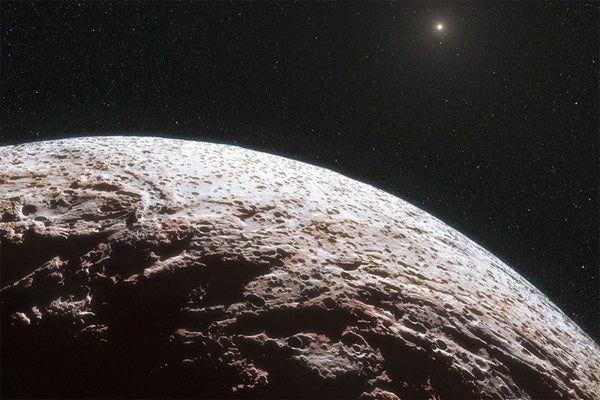There are plenty of weird objects in our solar system, but the newly discovered trans-Neptunian object (TNO) Niku might be one of the weirdest.
It’s not the composition of Niku that makes it strange. It seems to be a chunk of ice about 124 miles (200 km) in diameter, placing it at the lower threshhold of objects that might be considered dwarf planets. There are plenty of objects its size and its composition out in the Kuiper Belt and beyond.
No, the really weird thing about Niku is that it’s far, far, far above the ecliptic — the sort of “plane” of the solar system on which the planets lie, with the Earth considered at the 0 degree point on the ecliptic. So how far is Niku above it? 110 degrees. In other words, it’s so far above it that it has entered a retrograde orbit.
The most inclined of the planets is Mercury, at 7 degrees above the ecliptic. Dwarf planets Pluto and Eris are 17 degrees and 44 degrees above it, with many dwarf planets falling in that range. Many smaller solar system objects can be in inclined orbits, including asteroids and comets. But Niku is certainly one of the largest objects in such an orbit.
So, how did it get there?
That’s what astronomers are trying to figure out. In a New Scientist report, a number of possibilities are explored. But the object isn’t far out enough to fall into the Sedna family of objects that give a persuasive argument for a ninth planet out in the solar system. There are other, smaller objects in a similar orbit, so something likely tugged them there.
But whatever it is, it isn’t making itself very apparent. The object, detected by the Pan-STARRS 1 survey, instead remains an oddity, and a mystery in search of an answer. For right now, they’re just calling the influencer an “unknown mechanism” in a pre-print released on Arxiv. The answer may require finding more and more objects just like it — if there’s an easy to find answer at all.










